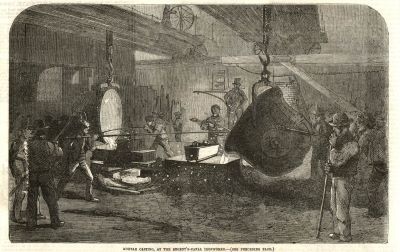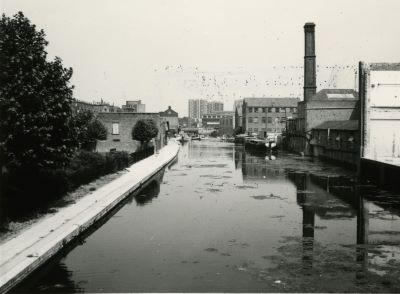Wenlock Basin

Above: Wenlock Basin, derelict in 1981
Wenlock Basin (above, in 1981) was at the cutting edge of telecommunications in 1846 when the Gutta Percha (a tree gum) Company made the 29 miles of underwater telegraph cable connecting England and France. A century later, the building housed Waterlow Printers. Apprentices faced an initiation of being put in a cardboard box, covered with ink and thrown into the canal!
Below: The basin in 2016
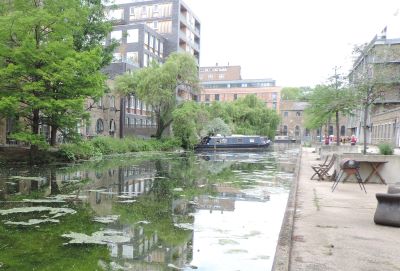
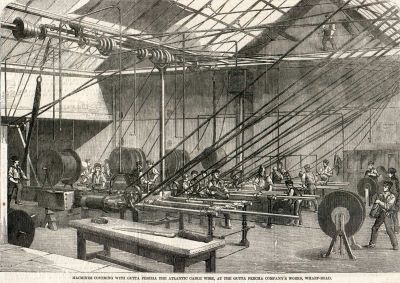
Above: inside the gutta percha factory
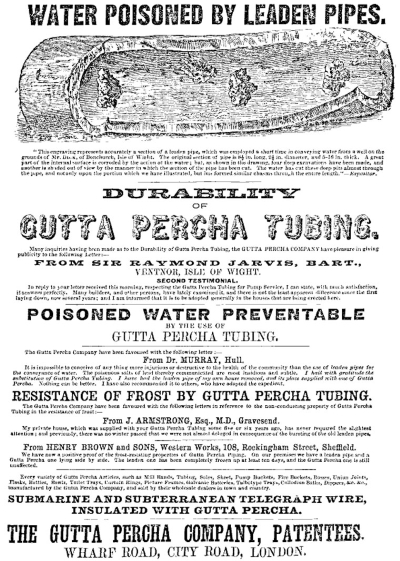
The canal was an ideal location for ironworks and foundries. Canal water carried the weight of metal with ease, and cooled the finished products. Returning warmed, it provided a favourite bathing spot. The Regentís Canal Ironworks in Eagle Wharf Road made decorative iron work for Buckingham Palace and Covent Gardenís Floral Hall. Ted Harrison watched the workers in a foundry: Ďturning and riveting girders together. One man used to hold a dolly. The other man had a special riveting hammer. A boy warmed the rivets up and threw them red hot with tongs. The man caught them in a ladle, plumped them in the hole, put the dolly on it and riveted them. If the boy dropped them, of course he got a clout.í
Below: Inside the Ironworks
